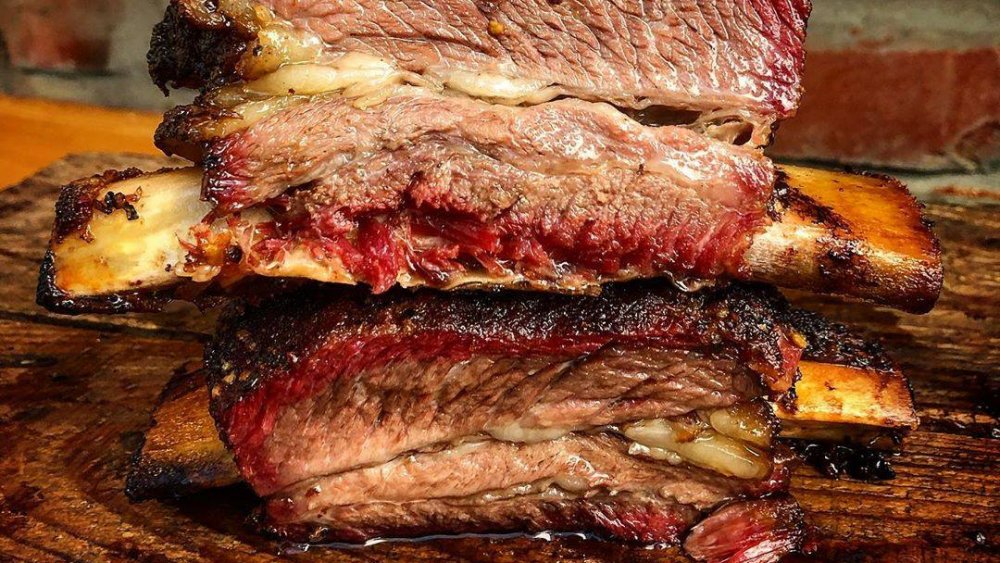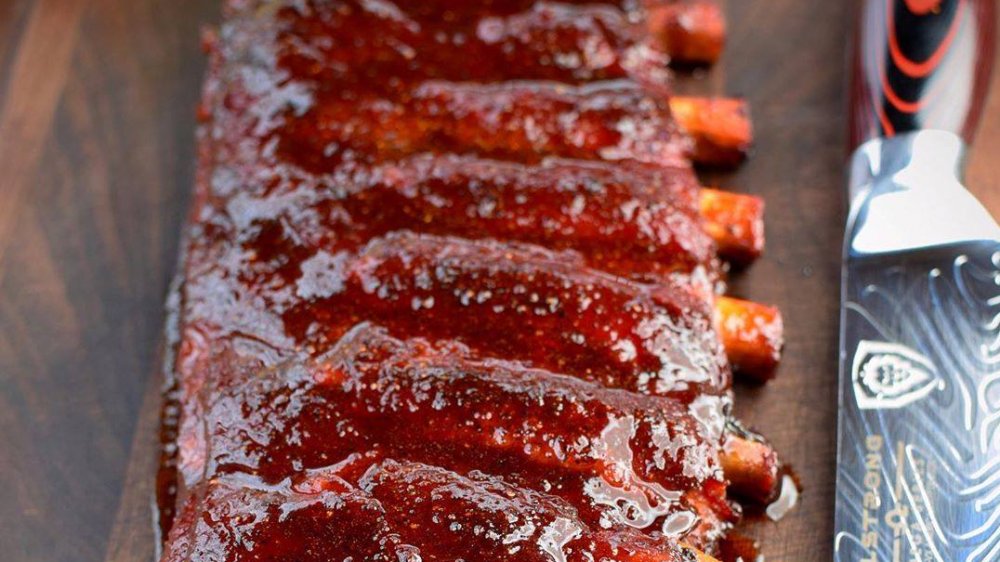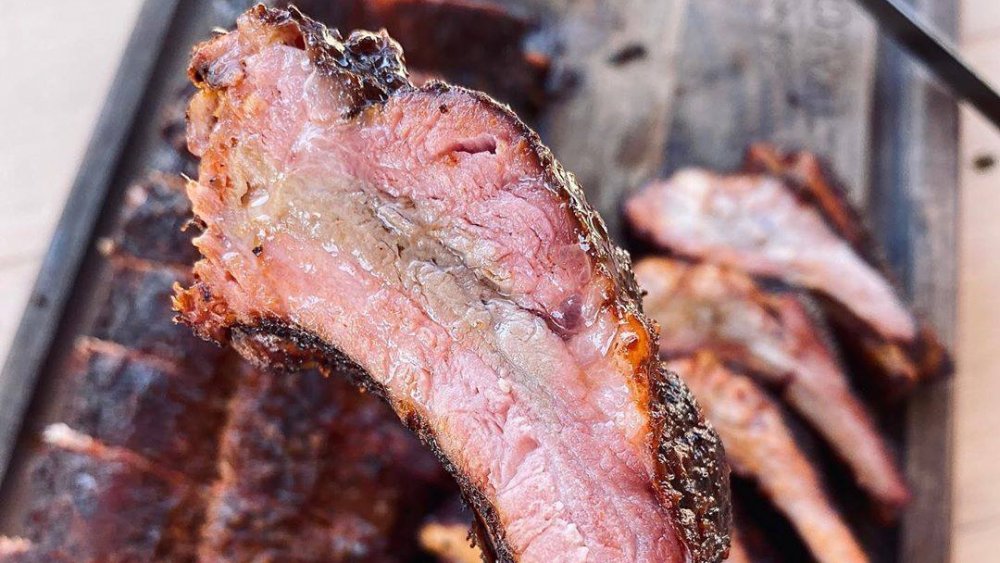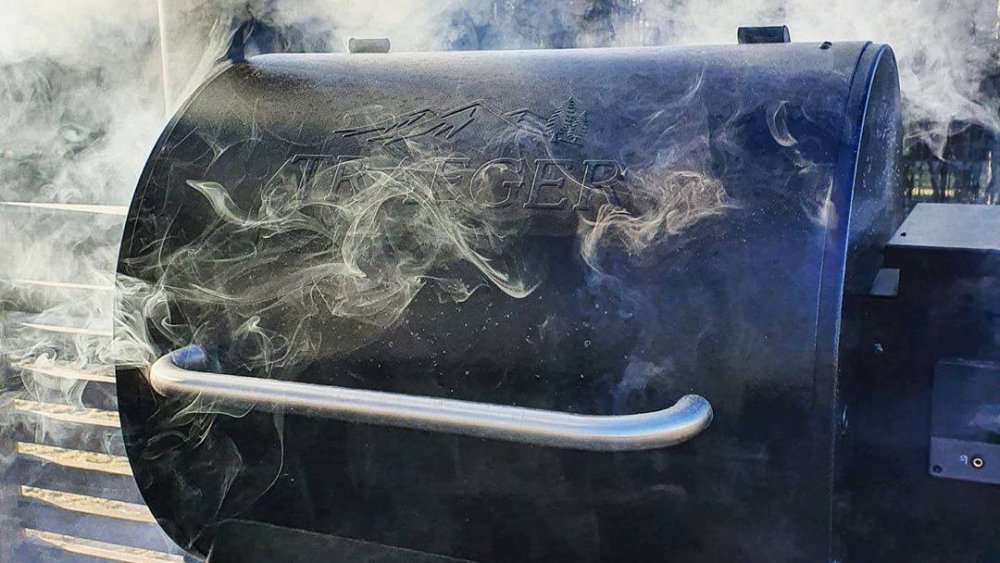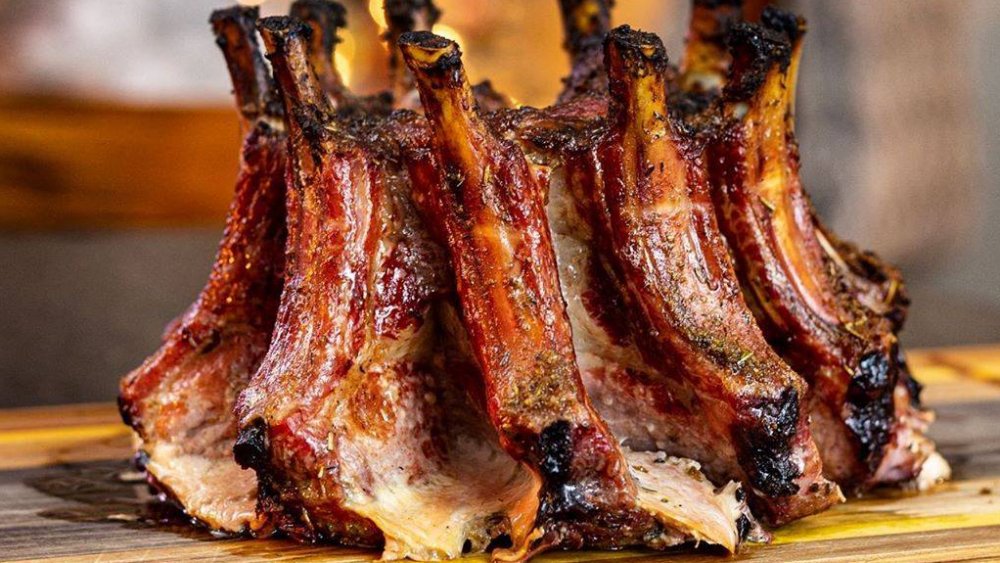Chef Breaks Down The Best Way To Cook Ribs
Forget religion and politics – if you want to start a real argument, claim that your way of cooking ribs is the only way. You say low and slow and you'll get a passionate defense of hot and fast. Assert that ribs need sauce and the no-sauce folks will have a bone to pick with you. And you've got to be insane in the membrane if you think you can convince people who don't like this pourable meat accessory on their ribs to feel otherwise.
But whatever your personal preferences, there are certain rules to follow when it comes to cooking righteously good ribs. In an exclusive interview with Mashed, chef Danielle "Diva Q" Bennett, an ambassador for Traeger Grills, delved into some of the do's and don'ts of making ribs. "There is no one right way to BBQ, but there are some great tips you can learn," she explained.
Choose the right meat
Your meat selection matters most, Bennett said. "Choose your ribs carefully," she warned. This is no small feat, as there are many rib cuts. Bennett's preference is a "St. Louis" cut, which she says is better than a baby back or a full slab. "The St. Louis cut of ribs are very consistent in thickness," Bennett explained. "They have lots of internal marbling – evenly distributed fat around lean meat – traditionally across ten bones." Another thing Bennett likes about this cut is that it's a smaller, rectangular slab that's cut from the larger slab of pork.
Go thick when you're shopping for ribs, Bennett added. "I always try to buy the heaviest ribs I can find," she explained. "Look for a consistent thickness throughout the entire rack of ribs." You want to avoid at all costs racks that have bones breaking through the meat, called shiners. "Flip the rack over if possible and check the back-bone area, making sure there are no cracked bones or blood bursts," Bennett advised. "The fat should be clean and white on the bone side."
How to prep your meat just right
Your ribs will need a flavor of some sort – definitely a rub, Bennett said, and possibly a sauce. (She knows that call is controversial.) "While every person has their preference, a key thing to keep in mind is balance," Bennett explained. "Your ribs should always be a balance of sweet savory and spice or heat. It works perfectly to make ribs your own flavor profile, but a balance bite is a good bite."
Once you've decided on a flavor, it's time to gear up to grill. You want to start with cold meat, which will increase the cooking time, for sure – but it will also amp up the flavor. Next, you've got to remove the membrane from the bone side, Bennett said. "No excuses; it has to be done. If you don't remove the membrane from the back of the ribs, you're leaving a barrier that will prevent rub/sauces and smoke from mixing into the ribs," she explained.
If you're not sure how to remove the membrane, Bennett offered a hack to do this in a few short steps: "Take a piece of paper towel, holding the rack of ribs in your hands. Go to the center portion of ribs, in between two bones, grab the membrane with paper towel, then pull upwards towards you." Easy-peasy, but you might go through a few pieces of paper towel in the process, she said.
Get your grill on
To cook your beautiful ribs in all their splendor, you need to get your grill on the right way. "In order to grill ribs to the ultimate level of awesomeness, you need to grill indirect," Bennett said, adding that her grill of choice is a Traeger Wood Pellet Grill, which is already set up for consistent indirect grilling. What if your grill is gas or charcoal? "You'll need to set up one side of the grill running hot, and the other side completely off," Bennett said. "My go to temperature for ribs is 225 degrees F to 275 degrees F, always done indirect."
While we're talking about grills, let's get into wood. "A good guide is to remember that the lighter the meat, the lighter the wood," Bennett explained. "Apple, cherry, hickory, alder, peach, pecan, and maple are all safe choices to pair with pork. The heartier woods like mesquite and oak can still be used, but they can overpower the meat if not used carefully."
And even though we all love a smoky flavored rib, you do want to make sure you're not emitting a ton of gray clouds when you grill. The wood you choose should generate "rather thin streams of blue or clean smoke," Bennett advised.
Knowing when your ribs are done
Cooking ribs isn't like baking a meatloaf or broiling chicken – there's not a specific cook time to shoot for. "Meat changes from rack to rack," Bennett explained. "It might have more marbling, or it might be thinner on one end." So you can't just say "grill for 10 minutes" and expect it to turn out perfectly regardless of the cut. Instead, Bennett said, a digital thermometer is your best friend. "A good recipe should always recommend a temperature," she added. "I wrap my ribs when they have reached 160-170F internal temperature. My ribs are then removed from the wrap glazed at 190-195 and returned to the grill to set the sauce."
How will you know when your ribs are ready to eat? The temperature to shoot for is 200-208F, Bennett said. But contrary to glorified descriptions of ribs that "fall off the bone," that's actually not what you want. "Properly cooked ribs should not fall off the bone!" Bennett warned. "You should be able to take a nice clean tender bite."
